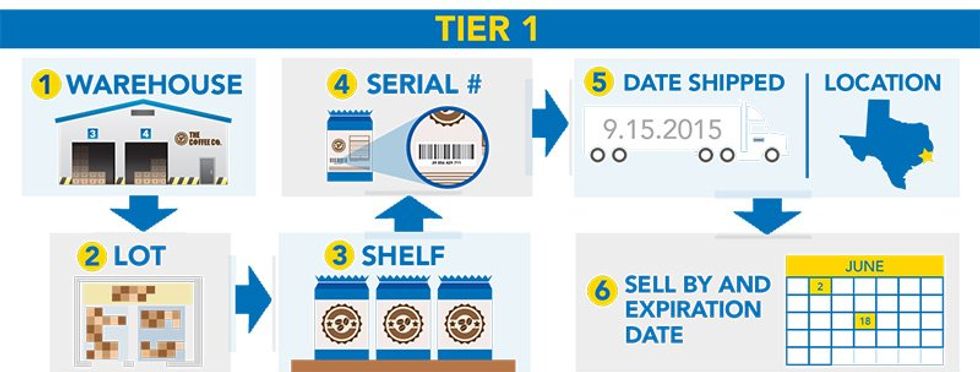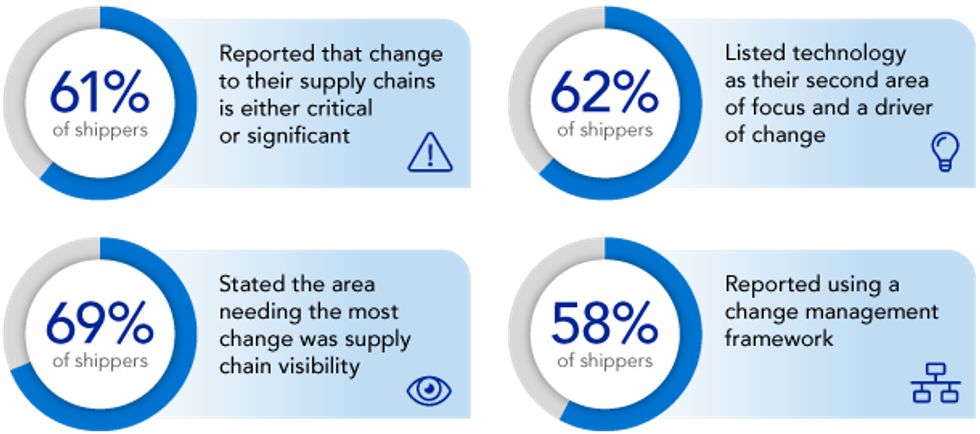Future Proof Your Business With Logistics Services
Supply chains are always vulnerable to disruptions, and the increased amount of global and geopolitical uncertainty is introducing new operational challenges that can change by the minute. Flexibility and adaptability are becoming table stakes as shippers and their logistics partners navigate unexpected and often unpredictable changes.
An agile and responsive supply chain is inherently more resilient and ready to withstand any challenges the future may bring. As the need to become more strategic increases, third- and fourth-party logistics providers are helping shippers strengthen their supply chains and ensure they’re built to last. These logistics solutions play a critical role in helping businesses future proof their supply chain.
Here are eight strategies that can future proof freight movements and support long-term resilience.
Get Ahead of Issues With Network Design
Network design has become essential as markets increase in complexity and uncertainty. Supply chain network design involves determining a supply chain’s optimal physical structure and infrastructure. Growth, evolving customer needs, geopolitical shifts and market changes can lead to inefficient networks that carry more risk.
Determining the optimal sourcing and storage locations and inventory holding levels can help shippers improve speed and flexibility. Network design elements include storage, warehousing and materials handling, packaging, inventory, transportation and information sharing.
Penske engineers model various network scenarios using different ports and suppliers, transportation modes and inventory strategies. These "what-if" simulations help identify optimal sourcing strategies, warehouse locations and transportation routes, allowing shippers to cut miles, reduce costs and improve utilization.
Find the Right Partner
The right partners can help optimize freight movements, navigate new rules and ensure capacity is available even if sudden needs arise. While transportation and freight management services are closely related, they address different aspects of the supply chain. Transportation management focuses on the strategic planning and optimization of the overall transportation network, while freight management focuses on the tactical execution of moving goods.
Both, however, can increase efficiency and resilience by increasing visibility, optimizing networks and routes, and reducing costs, which improves supply chain performance, removes waste and lays the foundation for future growth.
Together, these services create the operational agility needed to future proof freight logistics.
Penske provides comprehensive transportation and freight management services, including third-party carrier sourcing, load optimization, order management, freight auditing and performance analytics. Additional services include backhaul coordination, milk runs, cross-docking and load consolidation.
Outsource Transportation With Dedicated Contract Carriage
Dedicated contract carriage (DCC) provides the benefits of a private fleet, including visibility, control and reliability, without the burdens of ownership. DCC can help shippers reduce costs, increase truck capacity, flex as needed and transfer liability to an outside provider.
Our DCC offerings provide customers with a fully managed, well-maintained fleet, highly trained drivers and access to the latest technology. TheClearChain® technology suite provides real-time visibility on loads, proactive exception management, and automated reporting. ClearChain also models scenarios to increase efficiency, such as diversifying equipment or making more frequent deliveries.
Plus, we own and maintain all of the vehicles in the fleet and have the resources to meet seasonal spikes and unexpected surges by scaling with additional Penske drivers and trucks.
Take Control of Inbound Transportation
Reclaiming control over inbound transportation can increase transparency into freight costs and give shippers more flexibility with their freight. We have worked with several customers to unbundle the cost of the product from the transportation portion of the contract so they can handle their inbound loads.
Controlling the inbound flow also opens the door to supplier compliance programs. Shippers can designate which distribution center a supplier should ship from, which, ideally, is one closer to the end destination to improve service levels and reduce costs. Regular audits of compliance and freight bills not only enhance performance but can also uncover hidden savings.
Inbound optimization is a strategic way to eliminate inefficiencies and future proof your supply chain from the inside out.
Get Clear Insights for Informed Decision Making
Real-time visibility across the entire supply chain is becoming more and more important and allows shippers to make informed decisions about their freight and inventory. ClearChain integrates data from warehouses, transportation providers and even external sources such as weather forecasts and traffic conditions. Geofencing tools allow for instant rerouting during disruptions, while dashboards highlight issues like frequent short shipments or delays.
Artificial intelligence (AI) and machine learning are adding new insights for supply chain leaders. Our machine learning tools comb through massive data sets to detect anomalies in freight networks and help adjust operations in real time. Machine learning is particularly good at identifying exceptions, such as empty miles or delayed shipments, and suggesting efficient alternatives. This level of intelligence and proactive response is essential to future proofing freight operations.
Improve and Streamline Supply Chain Processes
These technologies are enhancing decision-making across logistics and supply chain functions. One key improvement is route optimization, where AI evaluates historical traffic data, weather and delivery constraints to create more efficient schedules that save time and fuel.
In demand forecasting, AI uses market trends and past performance to predict inventory needs more accurately, helping reduce stockouts and excess inventory. Additionally, AI is improving data visibility by digitizing critical information from various sources, reducing manual errors and speeding up communication.
Automation is also making a significant impact in physical operations. We use AI-powered yard management solutions to provide real-time visibility into equipment location and statuses, which automates trailer check-ins and check-outs, eliminates the need for manual checks and streamlines yard movements. In warehouses, we use AI-driven tools to guide picking, packing and sorting, cutting labor costs and improving accuracy. These evolving technologies give supply chains a competitive edge and help future proof performance across functions.
Choose Strategic Warehouse Management
When warehouses are designed and built with scalability and agility in mind, businesses are better positioned to handle disruptions, grow and pivot as needs and solutions change. The right design can optimize the space within the four walls, improve product movements and improve the speed and reliability of warehouse operations.
Penske Logistics has millions of square feet of warehouse space under management and offers a full-service approach that includes real estate, facilities and operational engineering. Simulation modeling, capacity analysis and labor optimization ensure every facility operates at peak performance while remaining flexible to future changes.
Scalable warehouse infrastructure is a key lever to future proof supply chain responsiveness.
Consider Utilizing Lead Logistics Services
Many companies are embracing the concept of a lead logistics provider (LLP), also called a fourth-party logistics (4PL) provider. 4PLs can oversee and integrate all aspects of a company’s supply chain, including third-party logistics providers, warehouse operations and transportation providers. An LLP can create leaner, more agile operations that reduce cost, improve visibility and boost resilience. This holistic approach enables companies to future proof their entire logistics ecosystem.
Partner With Penske To Future Proof Your Logistics Strategy
We offer specialized solutions tailored to customers’ operations, production and market demands. Services include supply chain management, dedicated contract carriage, freight management, freight brokerage, transportation services and warehousing and distribution.

